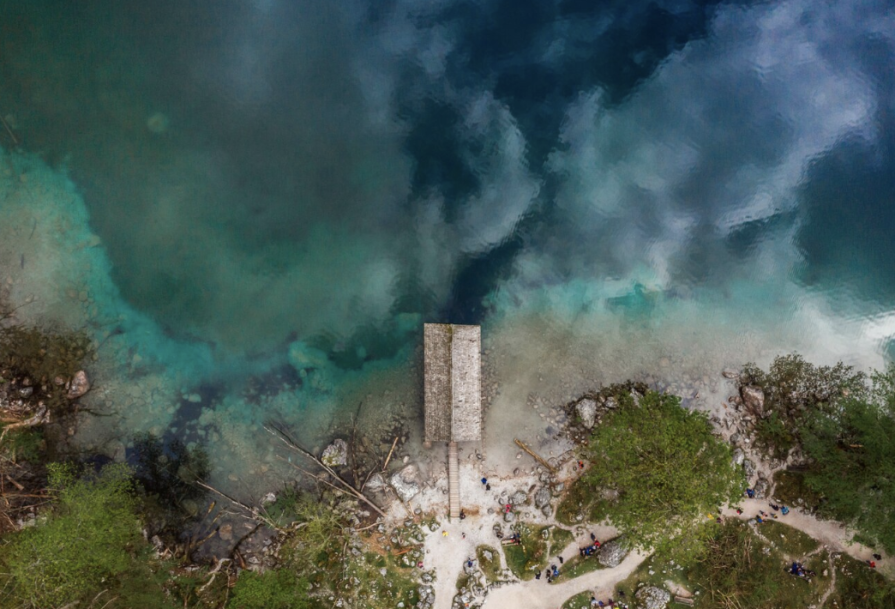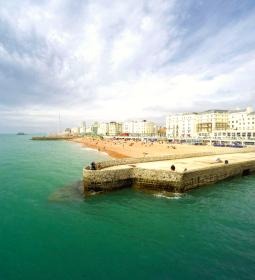Beach is a word that evokes only pleasant associations for most: the sun, waves, warm sand... But there are corners in the world where golden shores can become a death trap! These places look amazing, but only in the photo, but in fact they are fraught with dangers that neither sunscreen nor swimming skills can save you from.
The Island That Doesn't Like Guests
In the Bay of Bengal, among the Andaman Islands, hides a tiny but extremely inhospitable corner of the earth - North Sentinel. You can't get here just like that: local fishermen will not risk taking curious tourists there. They will do the right thing, because those who did find a way to land on the shore usually did not have time to go far: arrows flew from the jungle, and the trespassers had practically no chance of salvation.
The fact is that the island is inhabited by the Sentinelese - one of the last tribes that completely reject contact with the outside world. No one knows exactly how many of them live there and how exactly they survive. It is believed that they still do not even use fire, but their bows and spears, apparently, work perfectly. The Indian government has officially banned anyone from approaching the island, respecting the tribe's right to privacy (and the right of tourists to live...), so this paradise is one of the few in the world where visitors are really not allowed to enter.
The shore where you're just lunch
The Skeleton Coast in Namibia looks like a new movie about the end of the world was being filmed here. Giant sand dunes, raging oceans, rusty shipwrecks... The place is beautiful, but creepy. And for good reason. This stretch of the African coast is so harsh that almost nothing grows or lives here, except for predators. Hyenas, jackals, lions - they all come here in search of food, and sharks rule the coastal waters. If someone decides to swim, he risks being far from the top of the food chain.

But even if you manage to avoid sharp teeth, the problem will remain: there is no water for tens of kilometers around. At all. It rains here once every few years. And trying to get to the Skeleton Coast by land is quite a gamble, because the path lies through dangerous regions where armed conflicts are not uncommon. From the sea, it is also not easier: ships have been wrecked near these shores since ancient times due to underwater rocks and strong currents. If you suddenly want adventure, then it is better to look for something less deadly.
An island where death is in the air
Bikini Atoll in the Pacific Ocean is another place that looks like a tourist's dream. Snow-white beaches, azure water, serene atmosphere... But if you decide to walk barefoot on its sands, be prepared for the fact that the consequences may overtake you years later. The fact is that Bikini is not just an island, but a nuclear test site: in the middle of the 20th century, the American military conducted 67 explosions here, the last of which was especially powerful. It would seem that more than 60 years have passed, but radiation still remains at dangerous levels, in some places the background exceeds the permissible norms by six times.
Is it possible to stay there? Theoretically, yes. Probably, a short stay will not kill immediately, but the risk of developing diseases after such an excursion will increase significantly. Dust is especially dangerous: radioactive particles, once in the lungs, can cause serious harm to the body. So this "paradise" is better left for observation from satellite images.
European beach, where it is better not to step on the sand
Not all deadly beaches are located in wild corners of the planet. Sometimes the most treacherous places can be found in civilized Europe! One such example is the scenic coastline near the British village of Staits.

It looks like an ordinary beach, nothing portends trouble. But the water here is so polluted that one swim can turn into a multi-day fight against bacterial infections! The reason for this is garbage and sewage, which have been falling into the sea for decades.
Sand is also not harmless: if you injure your leg, there is a risk of catching a serious infection. Perhaps the tourist will not die on the spot, but a week with fever or incessant diarrhea will make you regret choosing this place for a vacation.
There are similar "trap beaches" around the world: in India, for example, Chowpatty Beach in Mumbai is so toxic that it is harmful to be on it even without contact with water, and in the Dominican Republic, on El Gringo beach, you can not only pick up infections, but also get a dose of carcinogens, because chemical enterprises are actively dumping waste nearby.
A beach where death creeps up unnoticed
Fraser is the largest sandy island in the world, located off the east coast of Australia. At first glance, it is an ideal place to relax: kilometer-long beaches, azure waters, mangrove forests... But if you move away from the shore and go into the water, you can encounter a tiny but deadly creature - irukandji.
This miniature box jellyfish is almost invisible: its body and long tentacles are so transparent that it is almost impossible to notice them in the water. The bite may seem insignificant at first, even imperceptible, but after a few minutes, hell begins: severe pain, paralysis, nausea, blood pressure spikes. In the worst case, pulmonary edema, brain edema and death.

Australia is generally famous for its poisonous inhabitants, and box jellyfish are one of the main threats to bathers. Fraser is just one of the places where they meet, but off the coast of the entire country, there is a chance of stumbling upon this insidious sea ghost.
Relaxation without risk
All these places have one thing in common: they attract tourists with their beauty, but are ready to present deadly surprises. Sometimes the risk is obvious, as in North Sentinel or the Skeleton Coast, and sometimes it's hidden in the water, air, or even sand, as in Bikini or Britain.
Of course, extreme tourism is gaining popularity, but is it worth it? Sometimes it is better to choose a beach where the maximum threat is sunscreen forgotten at home!













